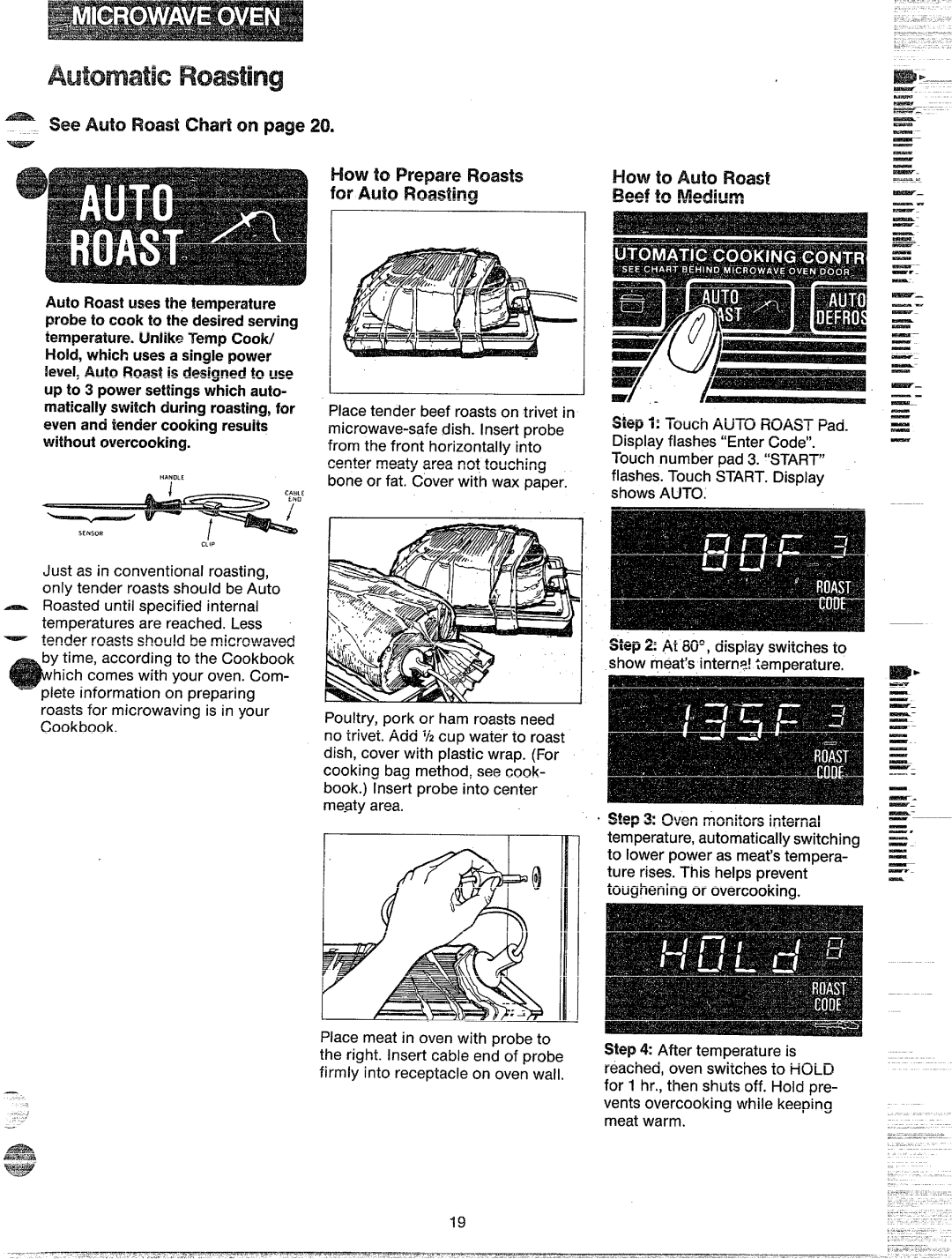
| C cmpage 20. |
| o | u |
| h |
| a |
| H | toP | Roasts |
| r | toA | R | e |
| forA |
|
|
| H |
| ||
| R |
|
| o B | k |
| a u |
— —
E?--= ——–
—
E
—
—
—
~—
—
—
~-
—
—
—
Auto Roasl uses the temperature probe to cook to the desiredsewing temperature.!.Mike T&np Cook/ Hold, which usesa sir@e power level,Auto Roastis designedto use up go3 powersettingswhich auto- maticallyswitchduring roasting,for evenand tendercooking results withoutovercooking.
H
S
ciw
Place tender beef roasts on trivet in
r
SBw.!. !
Step 1: Touch AUTO ROAST Pad. Display flashes “EnterCode”. Touch number pad 3. “START” flashes. Touch START. Display shows AUTO.
~—
—
—
—
—
I
—
—
—
—
E
Just as in conventional roasting, only tender roasts should be Auto Roasted until specified internal temperatures are reached. Less tender roasts should be microwaved by time, according to the Cookbook
hich comes with your oven, Com- plete information on preparing roasts for microwaving is in your Cookbook.
Poultry, pork or ham roasts need no trivet. Add % cup water to roast dish, cover with plastic wrap. (For cooking bag method, see cook- book,) Insert probe into center meaty area.
Place meat in oven with probe to the right. Insert cable end of probe firmly into receptacle on oven wall.
Step 2: At 80°, display switches to show meat’s interna! %mperature.
Step 3: Oven monitors internal temperature, automatically switching to lower power as meat’s tempera- ture rises. This helps prevent toughening or overcooking.
Step 4: After temperature is reached, oven switches to HOLD for 1 hr., then shuts off, Hold pre- vents overcooking while keeping meat warm,
—
—
—
—
—
—
—
—
~.
—
—
